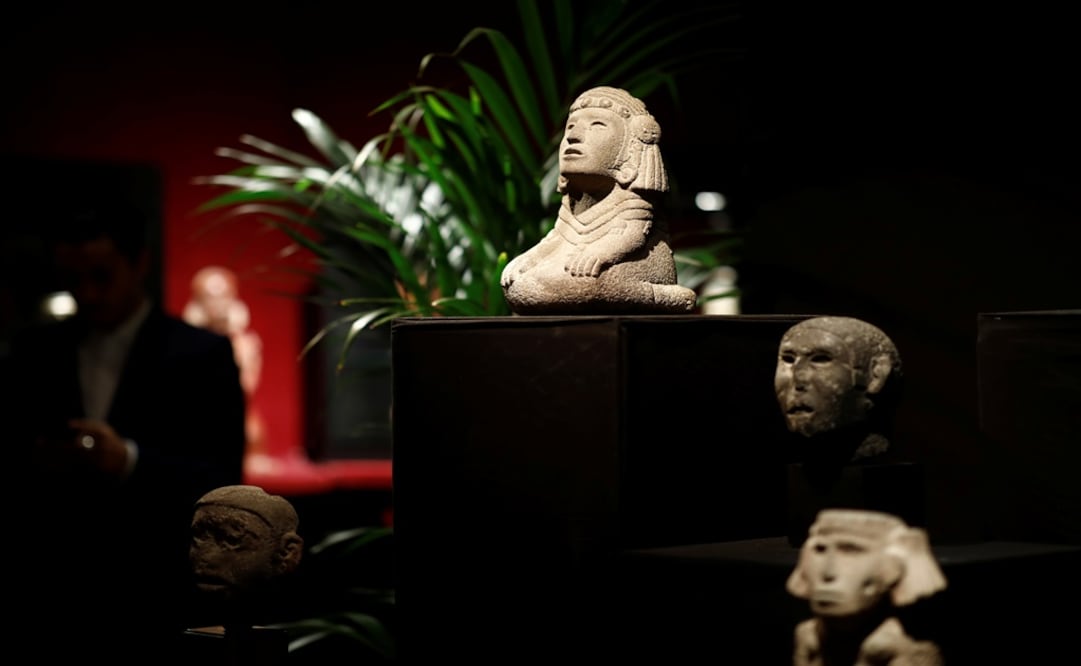Known worldwide by its artistic treasures, Mexico continues to suffer the looting of its cultural heritage despite the national and international laws on the matter, due to a lack of proper oversight , corruption , and indifference of other governments.
As the recent auction of a major Pre-Columbian art collection in Paris showed, bilateral and multilateral treaties are not enough to prevent this practice when particular economic interests are involved, considering that France and Mexico have a Convention on Mutual Assistance in Criminal Matters and both countries are parties of the UNESCO Convention on the Means of Prohibiting and Preventing the Illicit Import, Export, and Transfer of Ownership of Cultural Property of 1970 .
On September 18, French auction house Millon denied accusations by the Mexican government that the sale of at least 95 of the 120 pieces in the auction was illegal , obtaining EUR €1.2 million for the collection that included sculptures , masks , and religious artifacts from before 1000 B.C. up to the eighteenth century A.D.
Millon President Alexandre Millon
said that the French “ artists ” Manichak and Jean Aurance listed as the owners of the artifacts , satisfied all the legal criteria to justify their ownership of the collection , which they amassed since 1963 .
Even worse, he argued that the Mexican government “ should use this auction to say ‘look at this sale, it’s one like these we need’ in an effort to stop other auctions which might not take the same precautions,” adding that its complaint was “ ridiculous .”
“ It is not our duty to judge the history or legitimacy of the claims , nor the moral in general, beyond the prism of a strictly legal frame,” Millon stressed.
Last year, after receiving a special report that he commissioned, French President Emmanuel Macron became the first Western leader to initiate a comprehensive review of artworks looted in colonial times and promised to return 26 pieces to Benin .
In a speech at the Uagadugu University in 2017 , he said he could not accept “that great part of the cultural heritage of several African countries was in France ,” stressing that “there are historical explanations for this yet there is no valid, lasting and unconditional justification.”
However, France’s Ambassador to Mexico , Anne Grillo , declared that Millon’s auction was a “ private event .”
From time to time, such a kind of “ private events ” spark the debate over whether Western collectors and museums should return objects to their countries of origin .
Unfortunately, collectors and museums often argue that there are no proper conditions to ensure the adequate care of the artworks , resorting to justifications bordering in neocolonialism and disdain towards other peoples .
Take the words of Hartmut Dorgerloh , director of Berlin’s Humboldt Forum museum , for instance, regarding the claim of restitution from countries of origin: “How far back will you go? Until Roman times? Because many items in Rome were robbed somewhere in Greece or in ancient Egypt.”
Babylonian tablets
For his part, Hartwig Fischer director of the British Museum affirmed that while the institution was “open to cooperation” with countries seeking to reclaim artifacts, “the collections have to be preserved as a whole” (last month, the British Museum returned to Iraq a collection of 156 Babylonian inscribed tablets looted after the 2003 allied invasion and smuggled through the United Arab Emirates ).
Dorgerloh has a point, nevertheless, highlighting that the history of the looting and appropriation of cultural objects is as old as civilization .
The Roman statesman, orator, lawyer, and philosopher Marcus Tullius Cicero prosecuted the magistrate Gaius Verres for looting Sicily ; Ibn Haldun ( 1332 - 1406 ), one of the forerunners of modern historiography, sociology, and economics, expressed his disappointment towards people who carried illicit excavations in the Arab world .
In the case of today’s Mexico, the United States , Spain , Germany , and Italy are the main international destinations of archeological vestiges and historical monuments stolen by national and transnational criminal organizations , according to the Attorney General Office ( FGR ).
Last April, the FBI gave back Mexico’s National Institute of Anthropology and History ( INAH ) two pieces of Teotihuacan origin , a culture that settled in the center of the country during the Mesoamerican Classic period.
One month later, Italy returned nearly 600 artworks stolen from religious temples seized in Milan ; the lot is already exhibited at the National Museum of Cultures in Mexico City .
In 2018 , after a legal process of almost ten years in German courts, Mexico recovered two Olmec wooden busts of over 3,000 years of antiquity , originally from the archeological site of “ El Manatí ” in Veracruz .
The Olmec artworks were confiscated in 2008 from the Costa Rican trafficker Leonardo Patterson by the Criminal Investigation Office of the German state of Bavaria , for which Mexico started the corresponding legal actions to achieve its repatriation.
In contrast, negotiations between Mexico and Austria have been fruitless in the last decades to repatriate the emblematic Penacho de Moctezuma , the headdress of the last Aztec emperor, Moctezuma.
The exact origin of the headdress made of gleaming green feathers held together by rows of golden beads is disputed, yet one version says Moctezuma gave it to conqueror Hernan Cortez in the sixteenth century .
By the twists and turns of history, it ended up in Vienna’s Ethnology Museum since the nineteenth century, along with liturgical artifacts dedicated to the gods Quetzalcóatl and Ehecatl .
Mexico
and Austria discussed in 2002 the implementation of a historical-ethnological report and a biological assessment on the piece, as well as its restitution to Mexico in order to restore it.
However, the European country finally decided that it was “ impossible ” to return the quetzalapanecáyotl or quetzal feathers headdress due to the risk of vibration and collapse during the transfer .
The Mexican government expects to reopen talks with Austria, this time with the aim of repatriate the headdress for its exhibition next year as part of the commemoration of the 500th anniversary of the fall of Tenochtitlán , the Aztec capital, remarked EL UNIVERSAL this month.
Mexico passed a law in 1972 prohibiting the export of cultural objects
. Over 40% of archeological sites and historical monuments in the country have been victims of looting , INAH reported.
Official figures from the institution detailed in 2016 that 90% of stolen cultural objects , including archeological pieces, liturgical artifacts, and religious art, are never recovered .
Between 2003 and 2016
, INAH listed 4,757 stolen historical or archeological objects . Only 67 were recovered by the authorities , who have deployed less than 900 experts on custodial duties for nearly 60,000 archeological sites across the country.
In addition, INAH filed 21 complaints to the Attorney General Office against the illegal sale or auction of archeological vestiges on the internet and social media in the last five years.
In some cases, inhabitants of poor rural communities find or steal pieces and decide to sell them to earn extra income . The middlemen who buy the artworks then offer the goods to private collectors or art traders.
Editing by Sofía Danis
More by Gabriel Moyssen
Noticias según tus intereses
[Publicidad]
[Publicidad]





















